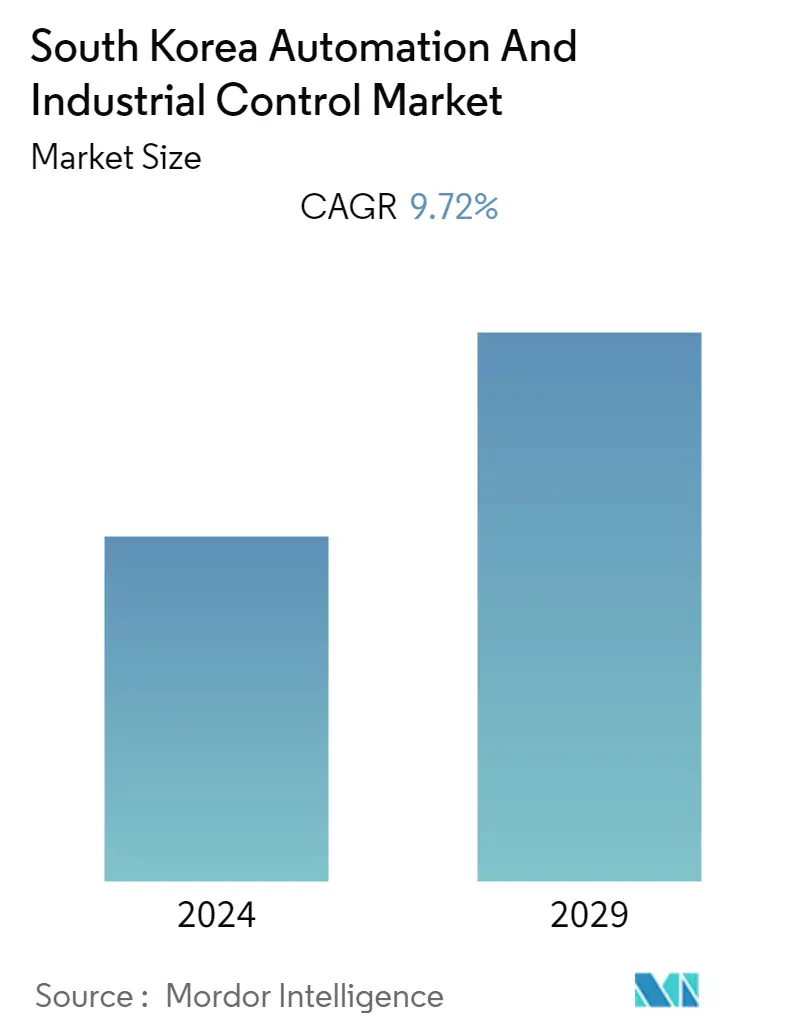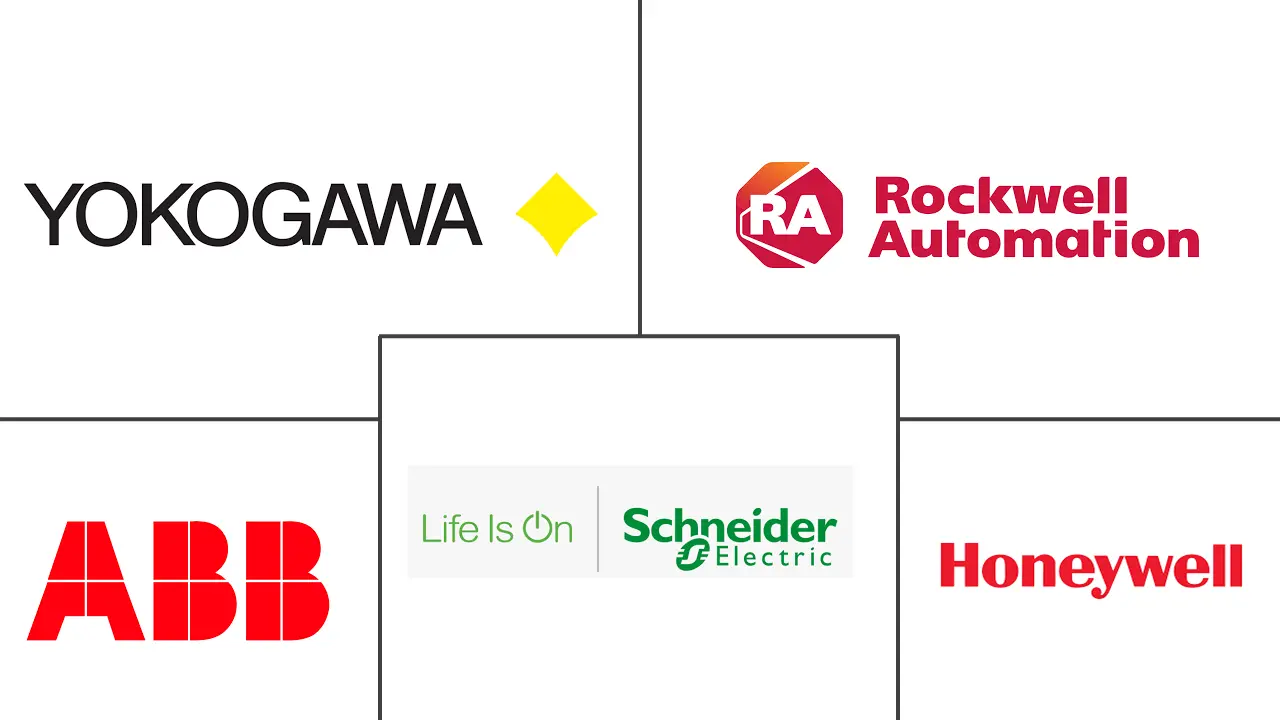Market Size of South Korea Automation And Industrial Control Industry

| Study Period | 2019 - 2029 |
| Base Year For Estimation | 2023 |
| Forecast Data Period | 2024 - 2029 |
| Historical Data Period | 2019 - 2022 |
| CAGR | 9.72 % |
| Market Concentration | Low |
Major Players
*Disclaimer: Major Players sorted in no particular order |
Need a report that reflects how COVID-19 has impacted this market and its growth?
South Korea Automation And Industrial Control Market Analysis
South Korea's automation and industrial control market was valued at USD 5.625 billion last year and is expected to reach a value of USD 9.69 billion by the end of the forecast period while registering a CAGR of 9.72% during the forecast period.
- Factory automation and control solutions facilitate the automation of manufacturing/production facilities by designing and building fully integrated intelligent control systems, including robots, sensors, industrial equipment, computers, and advanced data processing solutions.
- Some prominent factors driving the growth of the market include the inclination of manufacturers toward cost-efficient processes, growing demand for the adoption of the Internet of Things (IoT) and machine-to-machine technologies, and significant automation of manufacturing processes. Automation of manufacturing processes offers several benefits, such as effortless monitoring, waste reduction, and enhanced production speed. This technology offers customers enhanced quality standardization and reliable products within time and at a much lower cost. Connecting industrial machinery/equipment and obtaining real-time data have been key in adopting SCADA, HMI, PLC systems, and visualization software, thus enabling the reduction of faults in the product, decreasing downtime, scheduling maintenance, and switching from reactive to predictive and prescriptive stages for decision-making.
- Furthermore, the virtualization of automation control systems is a key trend observed in the market, also known as the thin layer between the virtual machine and the host server. The virtual machine contains the operating system and software. Different operating systems are operated on top of a primary operating system using virtual machines. Virtualization can be applied on layers in an industrial premise, such as servers, storage, desktops, files, and networks. It provides benefits such as optimum resource utilization and savings of operation and power costs.
- Moreover, industrial system architects, integrators, and machine builders have leveraged connected computing advances to help manufacturing facilities function more efficiently. The upsurge in the requirement for real-time intelligence, better control of operations and scheduling, and increasing market penetration of big data analytics in the manufacturing industry are anticipated to further generate the demand for advanced process automation technology during the forecast period. Big data analytics facilitates an enterprise to use factory automation to shift from reactionary practices to predictive ones, a change that targets to improve the efficiency of the process and performance of the product. The increasing need for the adoption of advanced technology is likely to augment the development of the market studied.
- Automation equipment requires high capital investment to invest in smart manufacturing (an automated system can cost millions of dollars to install, design, and fabricate). The cost of purchasing the equipment, including robotic systems, conveyor belts, sensors, and control systems, can be substantial. The factory automation equipment also necessitates the customization and integration into existing production systems. This process involves designing, engineering, and programming the equipment to meet specific manufacturing requirements. The complexity of customization and integration adds to the overall costs. Moreover, installing automation equipment may require modifications to the existing infrastructure of the factory. These high costs discourage factory operators from choosing high-end industrial robots, challenging the market's growth.
- The COVID-19 pandemic forced many food and beverage manufacturers to automate their processes to minimize human intervention and prevent the spread of the disease. This aided the market's growth. Furthermore, the pandemic led to an increase in demand for network capacity and highlighted the need for robust and reliable 5G networks to support the growing digital needs of individuals and businesses.
